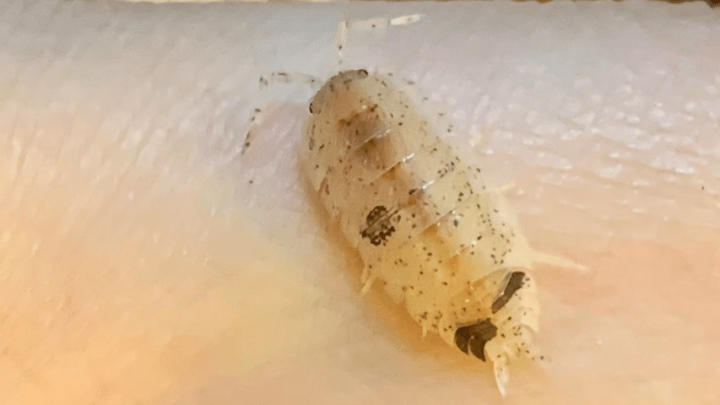Dalmatian isopods or Porcellio scaber “Dalmatian” are popular as pets and feed for other animals. In this article, I am going to talk about all aspects of Dalmatian Isopods Care.
(Image credits IG: @firesidereptiles)
Porcellio scaber itself is native to Europe according to the University of Michigan.
Dalmatian isopods are a color morph of the common rough woodlouse as Porcellio scaber is also called.
They are great to look at and resemble dalmatian dogs with black spots on white bodies.
They also curl up into balls and entertain you for hours, apart from their beautiful appearance.
In addition, Dalmatian isopods contribute to the environment they live in.
For example, these isopods will eat rotten organic matter like leaves and keep your enclosure clean.
They also act as substrate aerators and allow for other lives to thrive.
Moreover, Dalmatian isopods are delicious snacks for amphibians and reptiles.
Therefore, you can feed your lizards and frogs these isopods for lunch or dinner.
Most importantly, Dalmatian isopods are not challenging to breed.
You may grow a colony of healthy isopods by spending only a few minutes in your day.
Today, we shall learn how to care for Dalmatian isopods.
You will gather key information on aspects like diet, habitat, and breeding process of these isopods.
Additionally, we will explore a few basic topics like the lifespan and size of Dalmatian isopods. So, let’s dive right in without delay.
Dalmatian Isopods Care
Dalmatian isopods don’t need extensive caring or maintenance. They need a habitat that can be easily made out of a plastic container. The ideal temperature is 70 – 85°F (21-29°C). In addition, they need high humidity levels of 80% to 90%. As food plenty of leaf litter and an organic diet like vegetables and fruits.
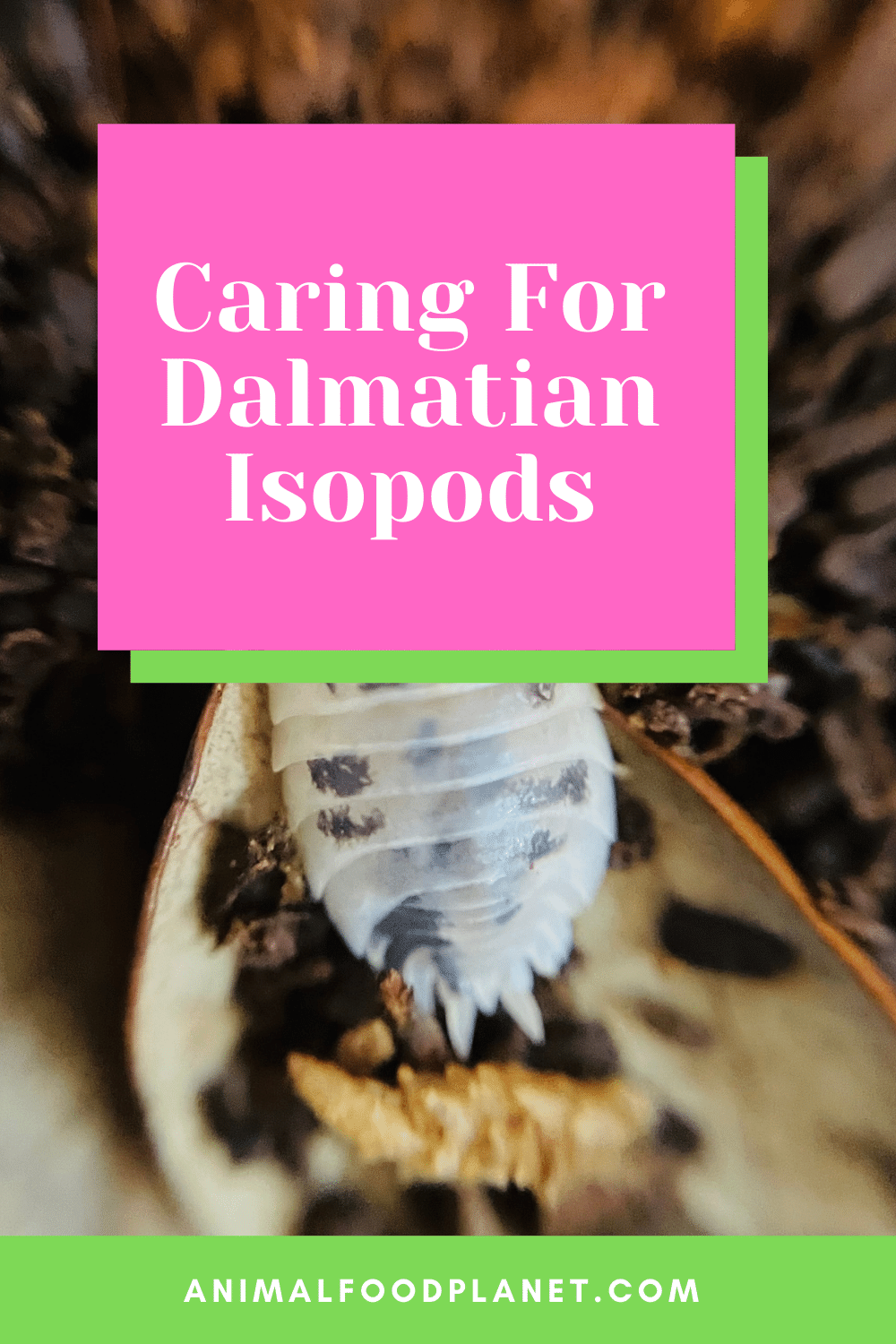
Caring For Dalmatian Isopods
Dalmatian Isopods Care – Full Guide
You can also culture Dalmatian isopods with male and female species. They multiply quickly and lead to a growing colony in a short time. These creatures are perfect for beginners and can be maintained with little work involved.
Common Size of Dalmatian Isopods
Dalmatian isopods are good pets because of their size. The biggest of them may grow to 0.7 inches or 20 mm.
However, most of them are at least half an inch long. Dalmatian isopods generally have a white body.
The black spots appear with age and become more prominent as they gain adulthood.
However, the occurrence and pattern of spots vary from one isopod to another, just like dogs.
Dalmatian isopods also have a soft body with a rugged outer body.
It resembles an ancient soldier’s armor with several scales lining the back of the isopod.
Dalmatian isopods breed fast even though they are not very big.
As a result, you may need to get a big enclosure to accommodate a growing colony.
Estimated Lifespan of Dalmatian Isopods
Isopods live up to 3 to 4 years. However, the bigger Dalmatian isopods may survive less, such as 2 years.
You can ensure proper longevity for your isopods by taking good care.
As long as your colony is alive, Ascertain that the temperature and humidity levels are adequate.
In addition, feed the proper diet and always ensure an adequate amount of food is present in the enclosure.
Moreover, keep the box well ventilated and refill the top layer when required.
These conditions can help your isopods live a longer life, even in captivity.
Difficulty Level
Isopods are generally easy to culture. You can use male and female species to grow your colony without any special intervention.
Therefore, even beginners can breed Dalmatian isopods with success. You also need a container that you may discover in your house.
In addition, you can feed things from the kitchen like vegetables for more convenience.
Moreover, Dalmatian isopods breed fast and take a short time to have countless isopods playing around.
Enclosure for Dalmatian Isopods
You can use things around the home as an enclosure for Dalmatian isopods.
For example, a shoebox or a plastic container are suitable options to keep your isopods.
However, it is advisable to utilize a plastic enclosure as they are easy to clean.
Moreover, the isopods won’t be able to climb to the sides and escape.
You may want a lid for the enclosure for additional security. One important thing when choosing an enclosure is ventilation.
Therefore, you will have to make holes in the lid to allow air to move freely inside the container.
You can also put holes on the enclosure’s sides a few inches above the substrate.
In the wild, Dalmatian isopods dwell on land in many places around the globe.
However, they love to stay under the rocks where there is more warmth or moisture.
In addition, you will find them in crevices or cracks in rocks in the woods.
Your enclosure should provide similar conditions for these creatures to live most comfortably.
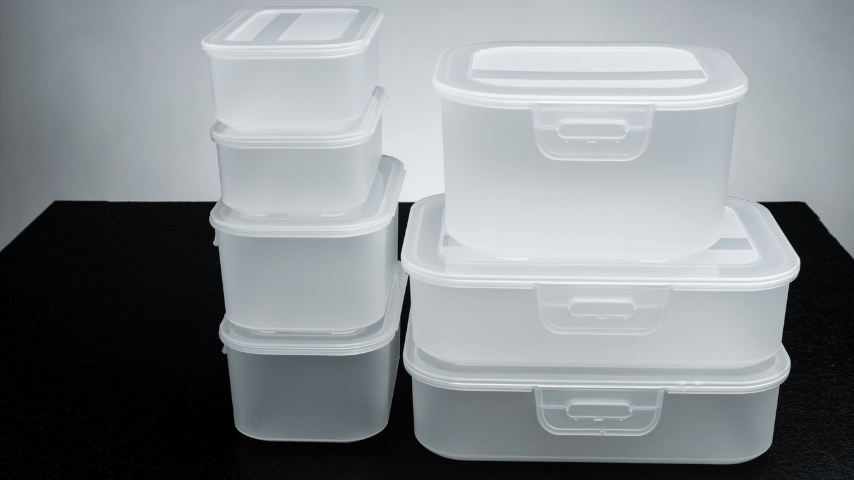
Plastic Containers Are Suitable Options To Keep Your Isopods
Substrate for Dalmatian Isopods
The substrate is crucial for Dalmatian isopods. It should be around two inches deep and end several inches below the top of the enclosure.
You can aim to create the base layer of the substrate with wood and peat moss. Sprinkle some water on top after you place the base layer evenly.
Next, you can boil leaf litter in a pan and put it over the base layer. It should be around an inch in-depth and allow the isopods to dig in.
This layer should always be well hydrated. You should spray water often so that the layer doesn’t dry up and dehydrate the isopods.
In addition, keeping the top layer humid ensures the substrate stays hydrated. It is highly important, as isopods can die in the absence of moisture.
Hobbyists may also use premix substrates available at stores for Dalmatian isopods.
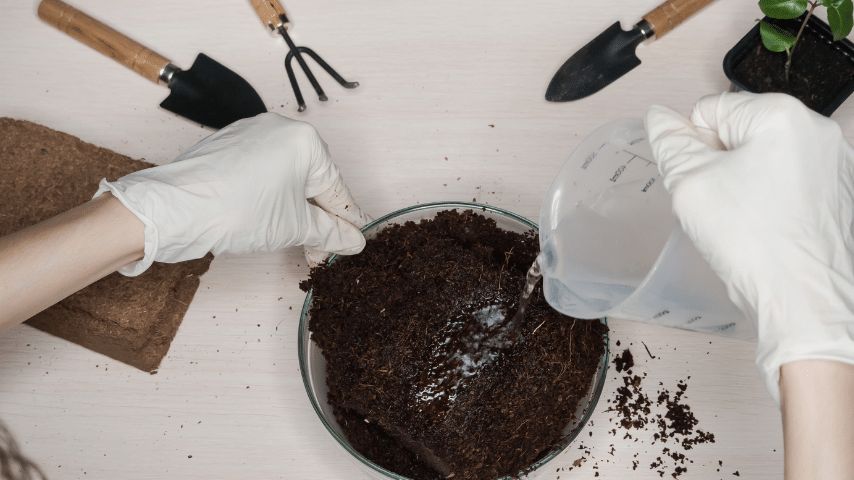
Substrate Is Crucial For Dalmatian Isopods
Suitable Temperature for Dalmatian Isopods
Dalmatian isopods prefer to live in warm and moist conditions. Therefore, you should keep the enclosure warm to ensure a healthy batch of baby isopods.
In captivity, you should aim for temperatures of 70 degrees F to 80 F. However, the temperature should be a little higher during the breeding season.
You can maintain around 75 degrees F to 85 degrees F while the female isopods carry eggs.
Most homes will have the right temperature to care for Dalmatian isopods.
However, you may need to shift your enclosure to a warmer spot in your house in colder locations.
In addition, you may use a heating pad to keep the enclosure warm. Just place the mat under the container and monitor the temperature.
Suitable Humidity for Dalmatian Isopods
As noted above, Dalmatian isopods love to stay in moist environments. Therefore, you will have to maintain a high level of humidity, around 80% to 90%.
This is more important during the breeding season when the female isopods lay eggs. The moisture ensures the eggs remain well hydrated and lead to healthy offspring.
You should also keep the top layer of the substrate well moistened all the time. The layer underneath it should likewise be well moisturized.
Therefore, you may have to spray a bit of water inside the container. Make sure always has enough moisture for the isopods as they can die due to dehydration.
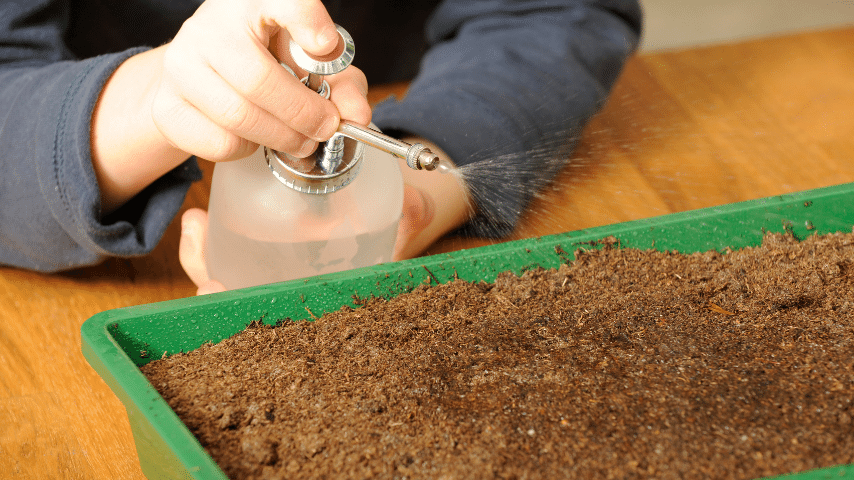
Spray A Bit Of Water Inside The Container
View this post on Instagram
Best Diet for Dalmatian Isopods
Dalmatian isopods will eat pretty much anything. They love to eat dead and decaying plant matter like leaves and wood.
Therefore, you can easily keep them well fed in established environments with enough organic matter.
In isolation, you may feed Dalmatian isopods leaf litter from oak or maple trees.
Additionally, you may throw in pieces of bark or decaying wood from the same trees for more nutrition.
Moreover, they may consume other organic matter to act as cleaners. In addition, Dalmatian isopods can be fed fruits and vegetables.
You may add potatoes, squashes, carrots, and more to the menu. However, cut the veggies into small pieces so that they are tiny enough for the isopods to eat.
Unlike some families of isopods, Dalmatian isopods don’t eat insects or bugs. Therefore, you shouldn’t feed them any cuts from meat like chicken or beef.
However, you can try different things like moss and even yeast. Ensure to feed Dalmatian isopods gradually to prevent overeating.
You should put a small amount of food in the enclosure when you notice a shortage. In addition, you may try premix food for isopods available from many brands.
You may also be able to get food meant for Dalmatian isopods to fulfill their nutritional requirements.
However, clean the enclosure of any decaying food and replenish it with fresh fruit and vegetables. The only rotten stuff allowed in the enclosure is leaves and wood.
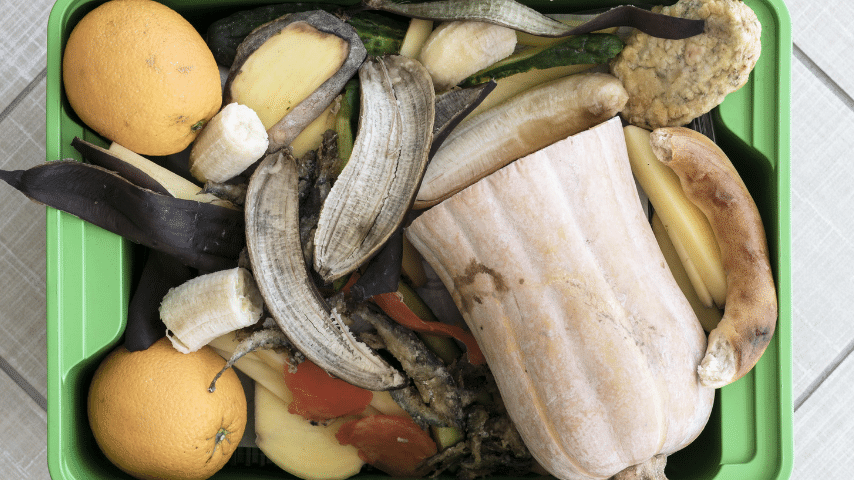
Dead And Decaying Plant
Breeding Dalmatian Isopods
Isopods are generally easy to breed, and the same applies to Dalmatian isopods. They multiply fast and can grow a colony of isopods in a short time.
Best of all, the colony will keep on growing as long as it has the right living conditions for the isopods.
You will need both male and female isopods to breed your colony.
Female isopods become sexually active at 6 months and mate with male isopods to produce eggs.
The female isopod will carry the eggs around in a sack under her body. She will also ensure the eggs are well hydrated till they hatch.
Approximately the eggs will hatch in a few weeks after the female mates with the male.
You’ll be unable to see the small isopods as they come out of the eggs. They will grow a little big in a few days and appear to the naked eye.
However, you will not see any black or dark spots during this time. The spots will appear after a while as these creatures age.
You can then watch them for hours and enjoy seeing these isopods turn into a ball if disturbed.
A female isopod lays several hundred eggs over her life. Therefore, you can expect to breed more isopods by maintaining suitable conditions for your colony.
During breeding, you should take a few extra steps to ensure a healthy batch of young isopods.
The temperature needs to be around 80 – 85 degrees F with enough warmth for the mother and the eggs.
In addition, you should maintain a humidity level of 80% to 90%. Always ensure the enclosure is well hydrated and the isopods have enough moisture to thrive.
Also, refill the enclosure with new rounds of feed and organic matter. Keep an eye on the existing amount of food and refill only when required.
Dalmatian isopods are quick breeders, and you may need more space soon. In that case, you may get a new enclosure and shift some of the isopods for more room.
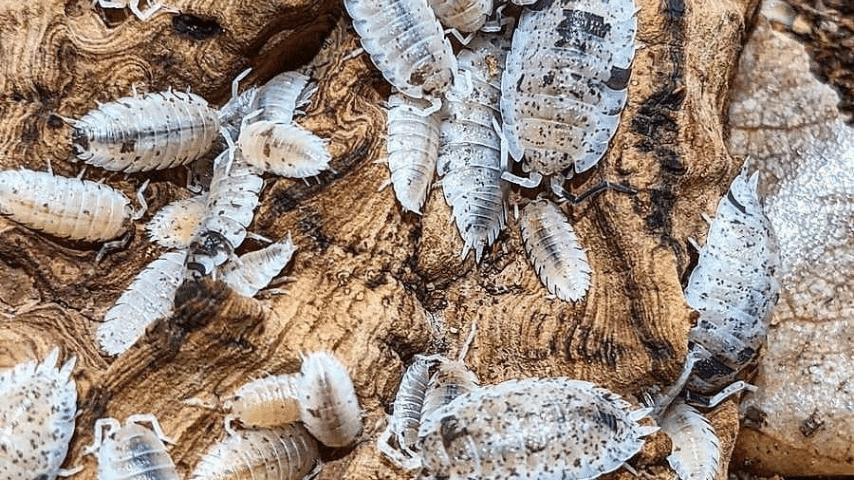
Dalmatian Isopods Are Quick Breeders Photo Credit: @feedershack on Instagram!
Frequently Asked Questions About Dalmatian Isopods
How big does a Dalmatian isopod grow?
Dalmatian isopods may attain sizes of over half an inch when mature. They may grow to about 0.7 inches or 20 mm.
What do Dalmatian Isopods eat?
Dalmatian isopods eat leaf and wood litter. They also consume vegetables and other organic things like squash or moss.
Can you keep Dalmatian isopods as pets?
Dalmatian isopods make great pets. They are big and curl into a ball when disturbed, providing you with entertainment.
Final Thoughts About Dalmatian Isopods Care
Dalmatian isopods are great pets and food for other animals. They also look beautiful with their black spots.
They are easy to breed and need you to fulfill only a few basic conditions. The list includes the right temperature, food, and humidity.
Most people will be able to care for Dalmatian isopods at home without additional setup or investments.
They can also be introduced in established environments to grow a colony or act as nutrition for pets.

